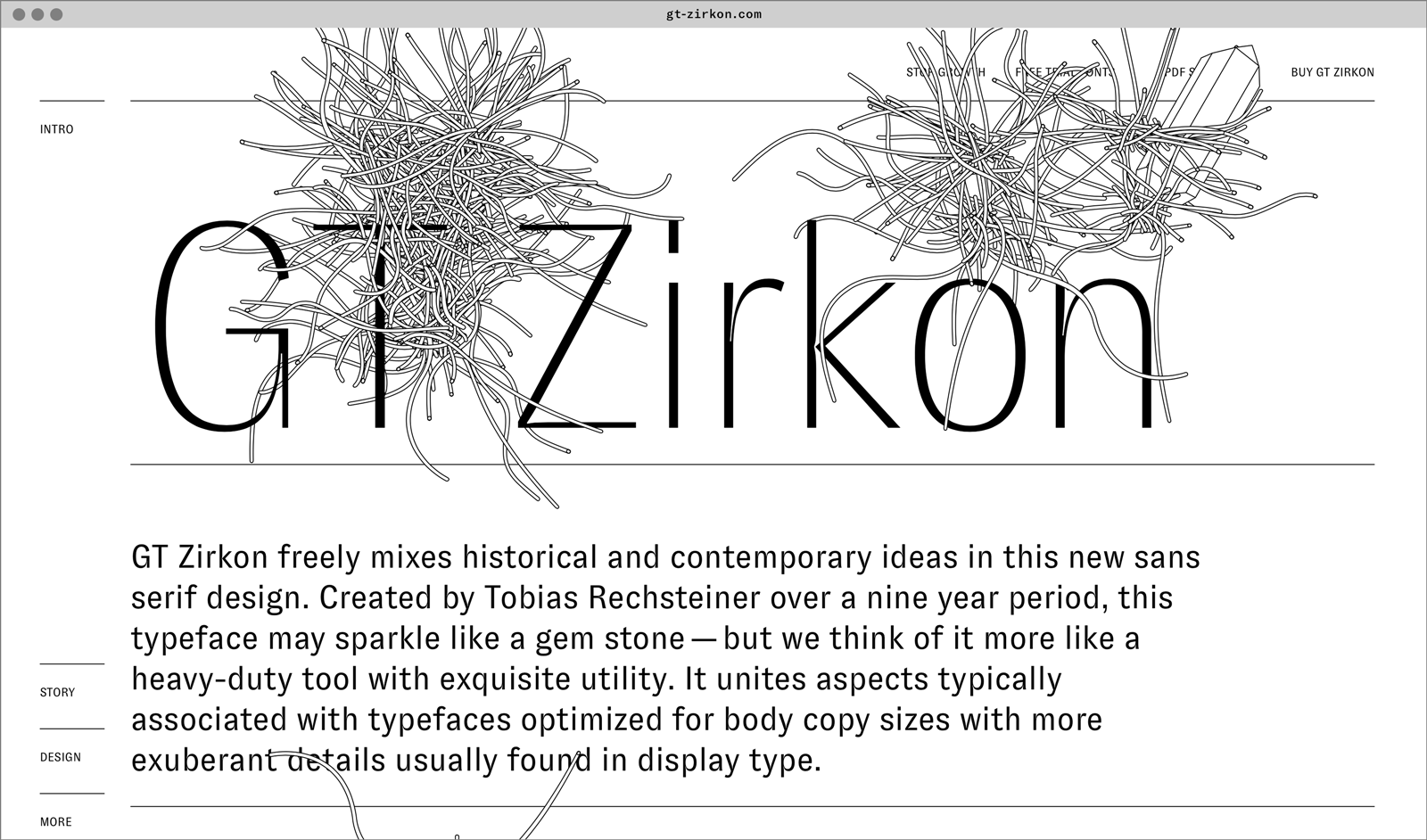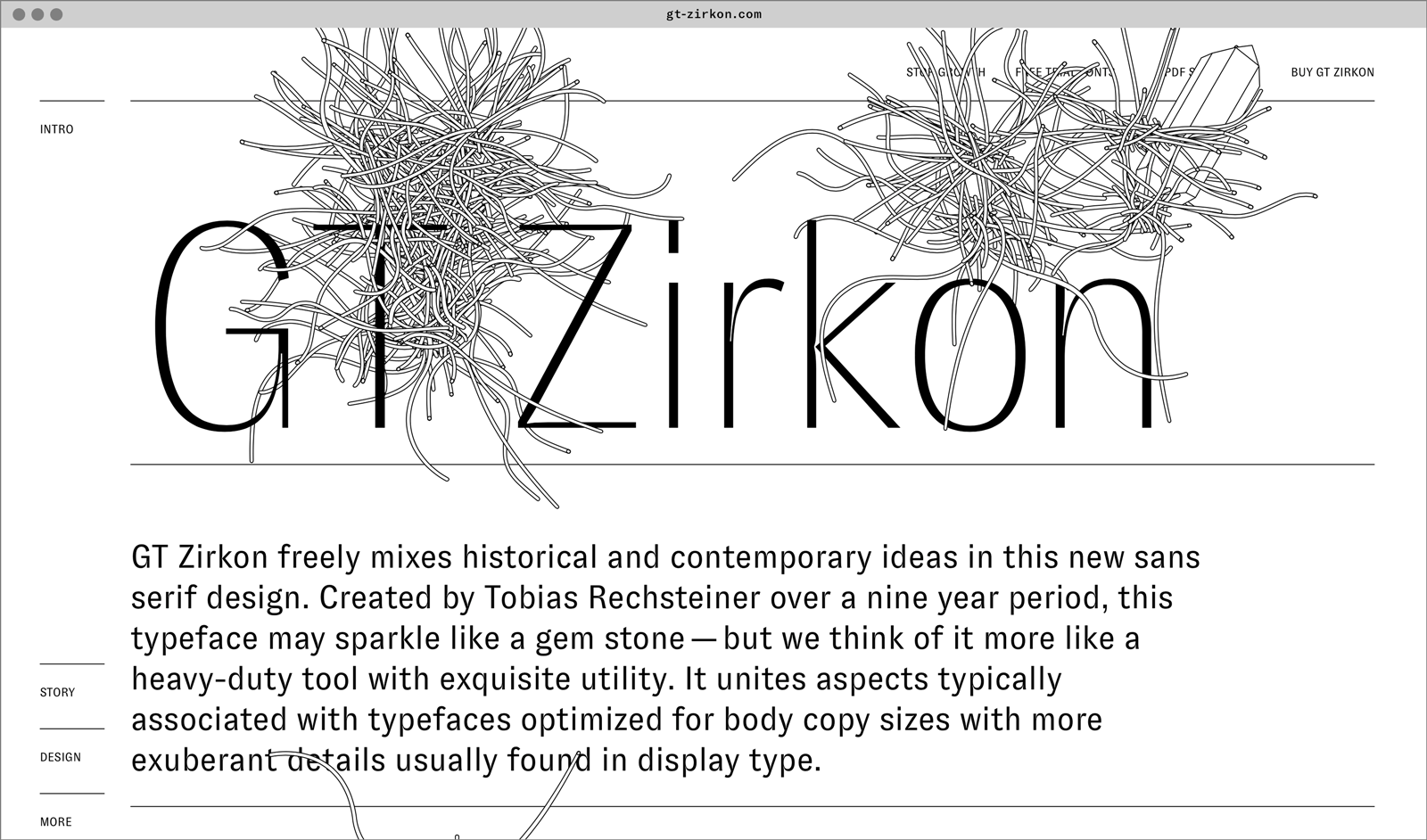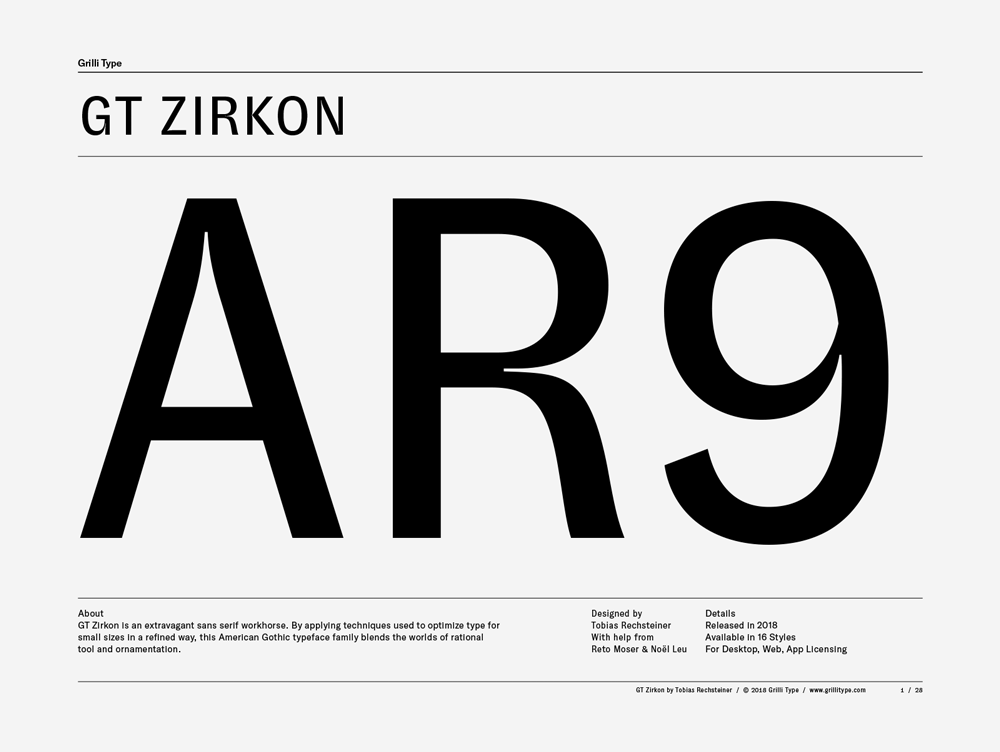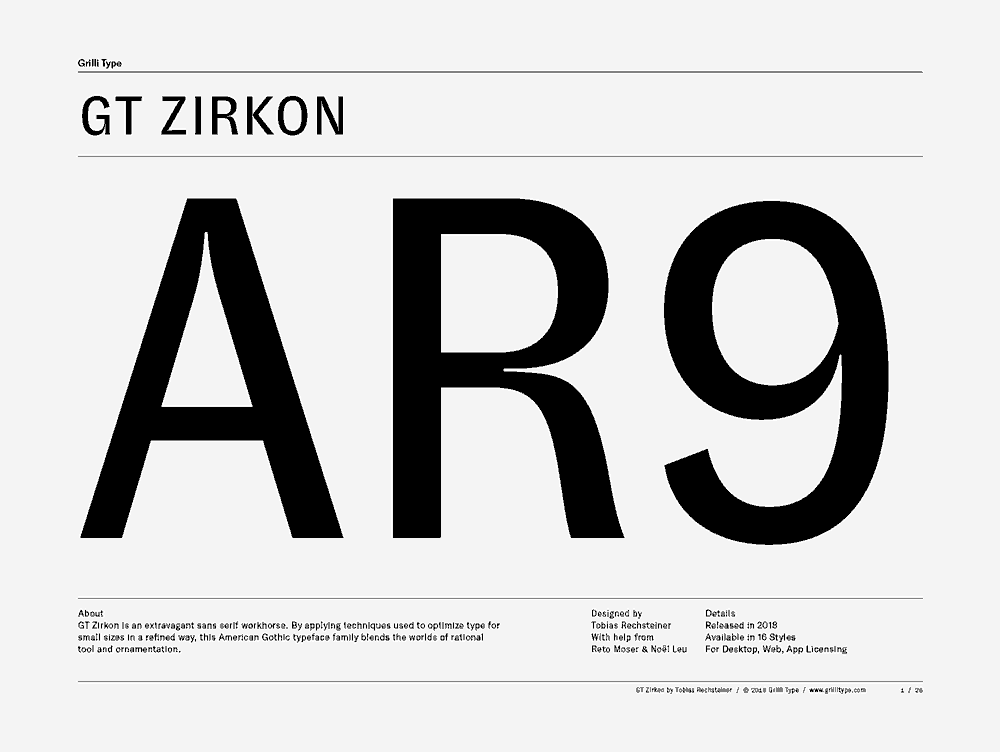GT Zirkon
Family overview
- Ultra Light Italic
- Thin Italic
- Light Italic
- Book Italic
- Regular Italic
- Medium Italic
- Bold Italic
- Black Italic
- Ultra LightChemical substitution and coordination polyhedra explain this common feature of minerals.
- Ultra Light ItalicScientists then studied the diamonds’ composition, looking specifically at their carbon isotopes.
- ThinOn the Isle of Skye near Ireland, is a chapel dedicated to St. Columbus, and on the altar is a round crystalline blue stone held sacred to weather and health.
- Thin ItalicThe name derives from the Persian zargun meaning gold-hued; this word is corrupted into “jargoon”, a term applied to light-colored zircons.
- LightZircon often contains traces of radioactive elements in its structure, which causes it to be metamict.
- Light ItalicZircon is mainly consumed as an opacifier, and has been known to be used in the decorative ceramics industry.
- BookZircon is ubiquitous in the crust of Earth and it occurs as a common accessory mineral in igneous rocks, in metamorphic rocks and as detrital grains in sedimentary rocks.
- Book ItalicConnected to internal radiation damage, these processes partially disrupt the crystal structure and partly explain the highly variable properties of zircon.
- RegularDuring the growth process, crystals are also highly susceptible to consciousness imprinting, whereby the meditations, through-patterns, healing energy or bioelectric field identity of the grower may be enjoined within the crystalline structure and memory.
- Regular ItalicCommercially valuable minerals and rocks are referred to as industrial minerals.
- MediumThe dark brown to black color observed in most Zircon crystals is caused from iron oxide impurities.
- Medium ItalicMinerals are distinguished by various chemical and physical properties. Differences in chemical composition and crystal structure distinguish the various species, which were determined by the mineral’s geological environment when formed.
- BoldZircons from Jack Hills in the Narryer Gneiss Terrane, Yilgarn Craton, Western Australia, have yielded U-Pb ages up to 4.404 billion years
- Bold ItalicThe English word “zircon” is derived from “Zirkon”, which is the German adaptation of this word.
- BlackDuring the growth process, crystals are also highly susceptible to consciousness imprinting, whereby the meditations, through-patterns, healing energy or bioelectric field identity of the grower may be enjoined within the crystalline structure and memory.
- Black ItalicRecent experiments, for example, have shown that crystals grow five times faster when their supersaturated solution is subjected to frequencies of 10 to 100 cycles a second.
- Settings
Typeface information
GT Zirkon is an extravagant sans serif workhorse. It blends the worlds of rational tool and ornamentation by applying techniques used to optimize type for small sizes in a refined way.
Typeface features
OpenType features enable smart typography. You can use these features in most Desktop applications, on the web, and in your mobile apps. Each typeface contains different features. Below are the most important features included in GT Zirkon’s fonts:
- SS01
- Alternate Arrows
Volume ↗
- SS02
- Alternate f
Refraction
- ONUM
- Oldstyle Figures
0123456789
- SMCP
- Small Caps
Ore Deposit
Typeface Minisite


- Visit the GT Zirkon minisite to discover more about the typeface family’s history and design concept.
GT Zirkon in use





